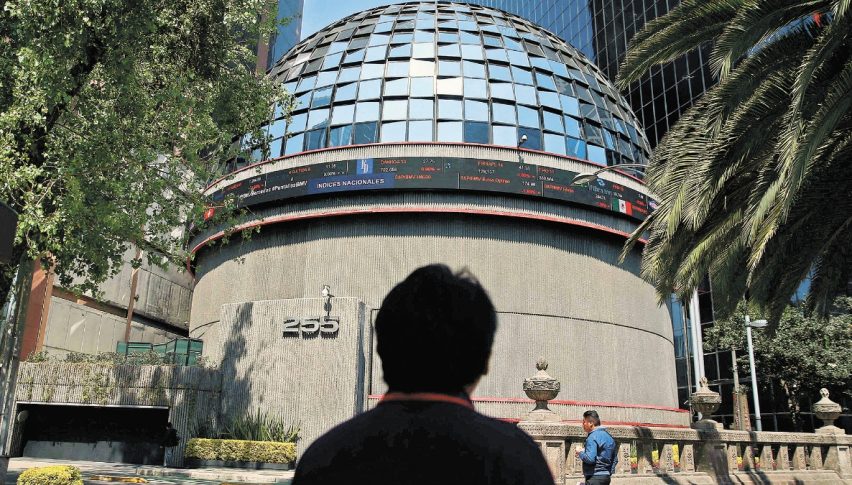The Mexican stock market started the week with a 1.08% decline.
Within the benchmark index, most stocks ended in the red. Gruma stood out with a loss of 7.57%, closing at 334.26 pesos.

The local stock indices retreated, mirroring their counterparts in New York, resuming their negative trend after Friday’s sharp rally.

Mexican stock markets closed Monday’s trading session with significant losses. The stock averages declined, in line with Wall Street, and returned to their downward trend following Friday’s strong gains.
The main index of the Mexican Stock Exchange (BMV), the S&P/BMV IPC, which includes the most actively traded local stocks, fell by 1.08% to 52,039.87 points. The FTSE BIVA, from the Institutional Stock Exchange (Biva), dropped by 1.25% to 1,069.60 points.
Within the benchmark index, most stocks ended in the red. Gruma stood out with a loss of 7.57%, closing at 334.26 pesos, following a preliminary ruling by the Federal Economic Competition Commission (Cofece) that identified the company as a dominant player.
Other notable losers included BanBajío, down 3.84% to 45.87 pesos, and Quálitas, which fell 3.20% to 146.5 pesos. On the positive side, Megacable gained 3.89% to 41.94 pesos, and Pinfra rose 3.85% to 135 pesos.
Investors remain focused on news from the Middle East, following the recent escalation in geopolitical tensions, while also preparing for key inflation reports in both Mexico and the U.S., along with minutes from their respective central banks.
This week, it was also reported that job creation in September was the lowest for that month in a decade, with only 90,968 new jobs generated—68.6% fewer than the same period last year, according to the Mexican Social Security Institute (IMSS) on Monday.
In its monthly report, the IMSS noted that only 4,410 temporary jobs were added, compared to 47,036 a year ago, and an even higher figure of 56,436 in 2022.
- Check out our free forex signals
- Follow the top economic events on FX Leaders economic calendar
- Trade better, discover more Forex Trading Strategies
- Open a FREE Trading Account



